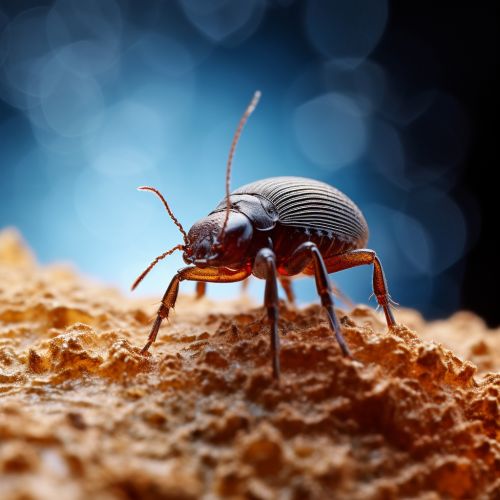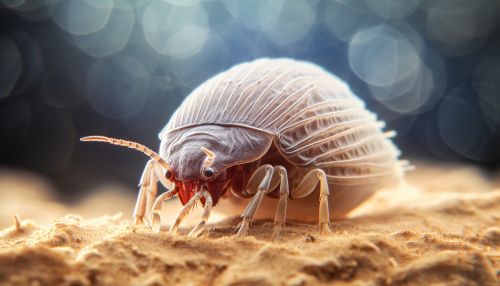Dust mite
Introduction
Dust mites are tiny, microscopic creatures that belong to the arachnid family. They are one of the most common indoor allergens and are found in almost every household around the world. Dust mites thrive in warm, humid environments and feed on the dead skin cells that humans and pets shed daily. Despite their small size, dust mites can cause significant health problems, especially for individuals with allergies or asthma.
Biology and Life Cycle
Dust mites are part of the Dermatophagoides genus, which includes two common species: D. farinae and D. pteronyssinus. These species are virtually indistinguishable to the naked eye, measuring only about 0.3 millimeters in length. They have translucent bodies and are covered with fine hairs.


Dust mites have a simple life cycle, which includes the egg, larval, two nymphal stages, and adult stages. The entire life cycle from egg to adult takes approximately one month to complete. Female dust mites can lay up to 100 eggs in their lifetime, contributing to their rapid population growth.
Habitat and Diet
Dust mites are found worldwide, but they prefer warm, humid environments. They are commonly found in human homes, particularly in bedrooms and kitchens. Dust mites thrive in mattresses, carpets, furniture, and bedding, where they have easy access to their primary food source: dead skin cells.
Humans and pets shed enough skin cells daily to support a population of millions of dust mites. In addition to skin cells, dust mites also consume mold spores, pollen, and other organic matter.
Health Impact
Dust mites are a significant source of allergens. Their feces and body fragments can trigger allergic reactions and asthma attacks in sensitive individuals. Symptoms of a dust mite allergy can include sneezing, runny nose, itchy eyes, and skin rashes.
In addition to allergies, dust mites can also contribute to the development of asthma. Regular exposure to dust mite allergens can cause the airways to become inflamed and narrow, leading to difficulty breathing.
Prevention and Control
Controlling dust mites involves reducing their numbers and limiting exposure to their allergens. This can be achieved through regular cleaning, using allergen-proof bed covers, and maintaining a dry environment. High humidity levels can promote dust mite growth, so using a dehumidifier can help control their population.
It's also important to regularly wash bedding in hot water to kill any dust mites present. Vacuuming carpets and furniture can also help reduce dust mite populations, but it's important to use a vacuum with a HEPA filter to prevent allergens from being dispersed into the air.
